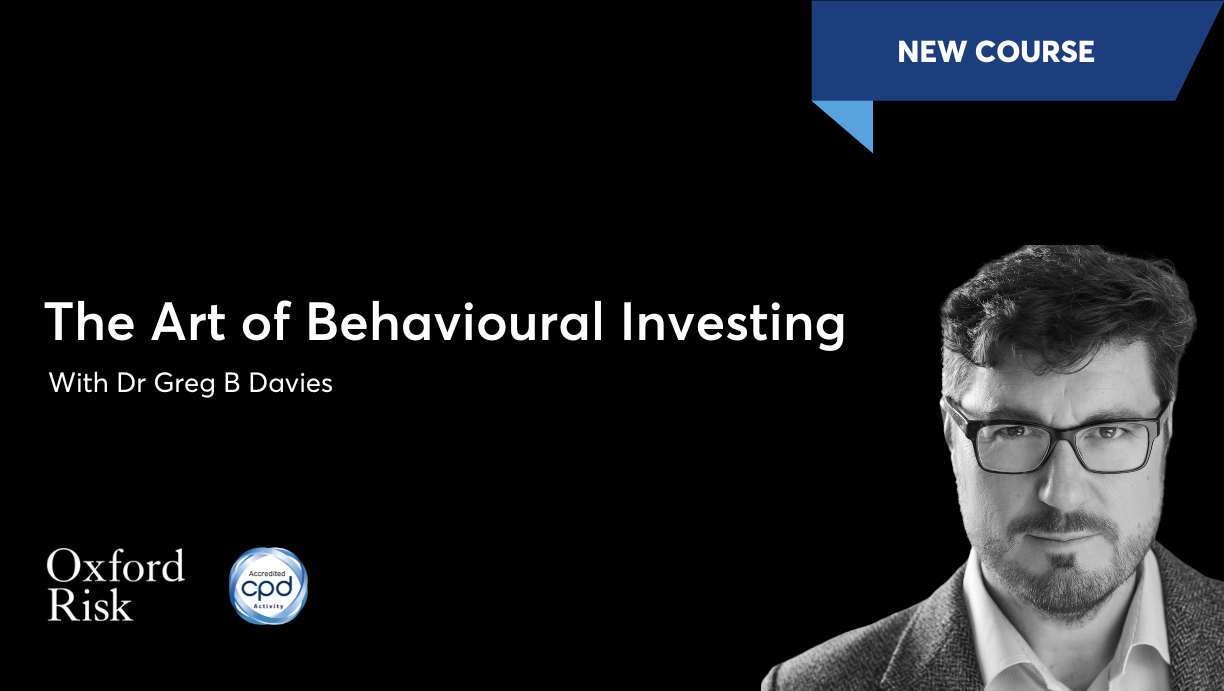Our New Behavioural Investing Course Is Live!
““The investor’s chief problem—and even his worst enemy—is likely to be himself.””
Investing is one of the most powerful tools for building long-term wealth. Yet, it can feel daunting, confusing, or even downright frustrating for many people.
The biggest challenge in investing isn’t the markets - it’s you.
Your own psychology, emotions, and biases can lead to costly mistakes that prevent you from achieving long-term success.
But what if you could outsmart yourself?
That’s exactly what our new course, The Art of Behavioural Investing is designed to help you do.
Why Behavioural Investing Matters
Traditional finance assumes we’re all rational beings making logical decisions.
But in reality, we’re emotional, prone to bias, and often our own worst enemies when it comes to investing.
This course will help you understand why you make emotional financial decisions and how to avoid the psychological traps that sabotage your success.
By working with your natural tendencies (not against them), you’ll learn how to become a smarter, more confident investor.
What Does The Art of Behavioural Investing Course Cover?
The Art of Behavioural Investing course comprises 7 chapters and a total of 35 lessons.
Chapter 1 - An Introduction to Behavioural Investing
This first chapter introduces behavioural investing and how it can make you a better investor. It includes the following lessons:
Lesson 1 - Why Behavioural Investing Matters
Lesson 2 - You Are Your Own Worst Enemy
Lesson 3 - The Two Brains Within You
Lesson 4 - Speak the Language of Investing
Chapter 2 - Know Thyself (Finding Your Financial Personality)
This chapter is about how your need for emotional comfort during your investment journey leads to costly behaviours. It includes the following lessons:
Lesson 1 - The Cost of Being Human
Lesson 2 - What’s Your Investor Type?
Lesson 3 - Know Your Comfort Zone (and Why It Matters)
Lesson 4 - Know Your Circle of Competence
Lesson 5 - (Over)Confidence and Confirmation Bias
Chapter 3 - Biases Through The Investment Journey
This chapter provides an overview of the various biases that the average investor encounters during their investing journey. It includes the following lessons:
Lesson 1 - The Cycle of Market Emotions
Lesson 2 - The Ascent – From Optimism to Exuberance
Lesson 3 - The Decline – When Fear Takes Over
Lesson 4 - The Recovery
Lesson 5 - Other Costs Through The Cycle
Chapter 4 - Understanding Investments
This chapter focuses on the long term, which can help you achieve steady, positive returns and avoid the common pitfalls of emotional investing. It includes the following lessons:
Lesson 1 - Time Is the Investor’s Superpower
Lesson 2 - Mastering Risk & Volatility
Lesson 3 - Luck vs Skill – Why Good Outcomes Don’t Always Mean Good Decisions
Lesson 4 - Why We Avoid the Unpopular
Lesson 5 - Market Bubbles – When Crowd Comfort Becomes Crowd Folly
Chapter 5 - Four Golden Rules to Behavioural Investing Success
This chapter shows how good investing doesn’t have to be complicated. Following just four simple rules can help you outperform most investors. It includes the following lessons:
Lesson 1 - Investing Shouldn’t Be Complex
Lesson 2 - Rule 1 - Create a Safe Environment for Investing
Lesson 3 - Rule 2 - Put the Rest to Work – Get Going!
Lesson 4 - Rule 3 - Diversify (and Invest Efficiently)
Lesson 5 - Rule 4 - Leave It Alone
Chapter 6 - Practical Tools to Stick to Your Plan
This chapter shares the tools to help you stay the course: your investing constitution, asset allocation, portfolio rebalancing, and pause points. It includes the following lessons:
Lesson 1 - Ulysses – Tie Yourself to the Mast
Lesson 2 - Create Your Investing Constitution
Lesson 3 - Your Asset Allocation: A Simple Yet Powerful Portfolio
Lesson 4 - Rebalance Regularly - How to Stick to Your Plan
Lesson 5 - The Art of Pause Points: Stopping Knee-Jerk Decisions
Chapter 7 - How to Make Better Investment Decisions
This chapter shares five practical ways to help you make better lifelong investment decisions. It includes the following lessons:
Lesson 1 - Improve Your Information Diet
Lesson 2 - Evaluate Expert Opinions – Who Deserves Your Attention?
Lesson 3 - Control When and Where You Make Decisions
Lesson 4 - The Play Pot - A Safe Space for Obsessive Tinkerers
Lesson 5 - Keep the Ropes, Update the Knots
Lesson 6 - What Now? A Simple Ending for a Lifelong Journey
What’s the Course Format?
This course is designed to be flexible, engaging, and practical. You’ll learn through:
Expert-led insights from Dr Greg B Davies and top investment professionals
Real-world case studies that bring behavioural finance to life
Interactive lessons that make learning easy and memorable
Actionable tools strategies you can implement immediately
Whether you're a new investor, a seasoned pro, or a financial advisor, this course will help you make smarter, more confident investment decisions.
Who Is This Course For?
New investors who want to understand their psychological blind spots
Experienced investors looking to refine their strategy and avoid emotional pitfalls
Financial advisors who want to help clients make better decisions
Anyone curious about the psychology of investing and how to use it to their advantage
Do You Get A Course Certificate?
Yes! Upon completion, you’ll receive a certification to showcase your expertise on LinkedIn, your CV, or anywhere else you want to prove your financial savvy.
Why Wait? Start Investing Smarter Today.
Investing success isn’t just about picking the right stocks - it’s about understanding yourself.
By mastering the psychology of investing, you can avoid costly mistakes, stay calm in volatile markets, and build long-term wealth with confidence.
Enrol now in The Art of Behavioural Investing to start your journey today!
Please note: This course does not constitute investment advice. For more information about Oxford Risk, visit www.OxfordRisk.com






